Introduction: The Sound of Shattering Glass
There are entrances, and then there is The Entrance. In the boiling cauldron of the late 1990s Monday Night Wars, when wrestling was a cultural juggernaut, one sound could hijack the entire broadcast: the percussive crash of shattering glass, followed by a martial, thumping drumbeat. It signaled the arrival of not just a wrestler, but a force of nature. From the darkness of the backstage tunnel, he would emerge, flanked by a phalanx of security, his face a mask of carefully cultivated, barely sublimated rage. He was William Scott Goldberg, and for a glorious, meteoric period, he was the most dominant, most believable, and most profitable star in the business.
He was not a traditional wrestler. He did not deliver eloquent promos; he spit and snarled. His matches were not technical clinics; they were violent, explosive bursts of action that often lasted less time than his walk to the ring. He was an elemental force, a former professional football player presented as an unstoppable killing machine, a “man who is undeniably the toughest man we have seen in decades”. This persona, built on a foundation of legitimate athletic prowess and amplified by one of the most audacious marketing gimmicks in entertainment history, made him a phenomenon. He was the man who led World Championship Wrestling (WCW) as its franchise player and public face, the man who crushed icons like Big Show and Hulk Hogan, and the man who asked one simple, terrifying question: “Who’s next?”.
But behind the smoke, the pyro, and the fabricated win-loss record lies a story far more complex and fascinating than the myth. It’s the story of a dream derailed by a catastrophic injury that paradoxically launched an even bigger one. It’s the story of a man whose entire appeal was built on authenticity, yet whose greatest claim to fame was a lie. It’s the story of a cultural icon, a passionate car collector, a dedicated animal rights activist, and a polarizing figure whose legacy is as explosive and debated as his signature move, the Spear. This is the unbelievable, undefeated (mostly), and unfiltered biography of Goldberg.
Part I: Forged in Georgia, Broken in the NFL
The Junkyard Dog from Tulsa
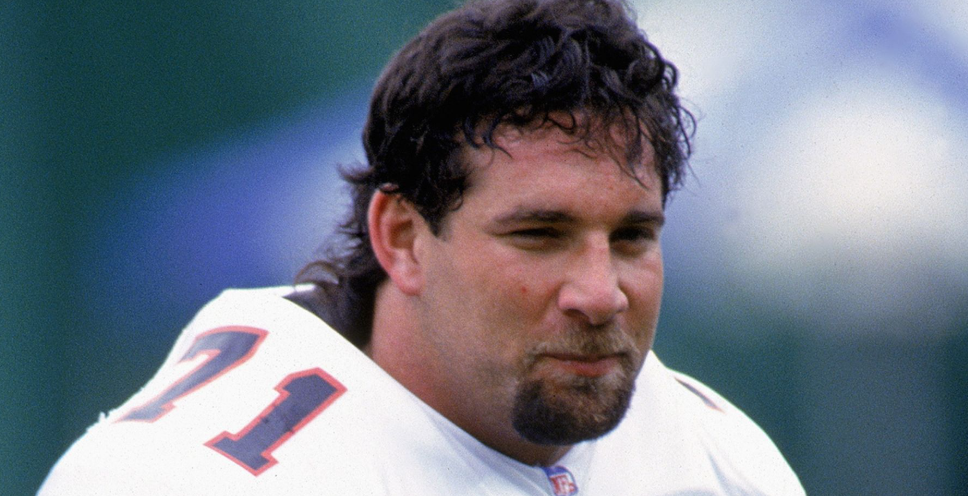
Before he was the myth, Bill Goldberg was a monster on the gridiron. Born in Tulsa, Oklahoma, to a decidedly non-athletic household—his father, Jed, was an OB-GYN and Harvard/Johns Hopkins graduate, while his mother, Ethel, was a classical violinist—Goldberg was the youngest of four children and a natural athlete from a young age. At Thomas Edison High School, he became a blue-chip football prospect, a defensive tackle so coveted that scouts flocked to Tulsa to watch him play. In a moment of youthful hubris that perfectly foreshadowed the larger-than-life persona to come, he once tried to bulk up for the scouts by devouring a 38-ounce T-bone steak the night before a game. The steak made a reappearance on the field after he tripped and landed on his face.
Despite his family’s hopes that he would attend a school like Texas A&M or the University of Oklahoma, Goldberg accepted a scholarship to the University of Georgia, admitting later that he didn’t even know the team’s colors at the time. It was in Athens that he truly honed the intensity that would define his career. Wearing the #95 jersey, he became a defensive captain and a cornerstone of the Bulldogs’ defense. He was a member of the vaunted “Junkyard Dog Club,” an honor reserved for Georgia’s most tenacious defensive players, and earned All-SEC honors in both 1988 and 1989. His career statistics remain etched in the university’s record books, a testament to his legitimate athletic prowess long before he ever stepped into a wrestling ring.
| Statistic | Value | |
| University of Georgia Career Tackles | 348 | |
| UGA Career Tackle Rank (All-Time) | 9th | |
| Tackles as a Senior (1989) | 121 (Led Team) | |
| NFL Draft | 1990 / Round: 11 / Pick: 301 | |
| NFL Team | Atlanta Falcons (1992-1994) | |
| NFL Games Played | 14 | |
| NFL Games Started | 1 | |
| NFL Total Tackles | 11 | |
| Other Pro Football | World Bowl II Champion (Sacramento Surge) |
A Dream Derailed
While Goldberg dreamed of playing for the Los Angeles Raiders, his professional football career was a frustrating journey of near-misses and nagging injuries. Drafted in the 11th round by the Los Angeles Rams in 1990, he failed to make the final roster. He found a brief taste of success in the fledgling World League of American Football (WLAF), where he won the 1992 World Bowl championship as a member of the Sacramento Surge. This performance earned him another shot at the NFL, this time with his college state’s Atlanta Falcons, where he played for three seasons from 1992 to 1994 and became close friends with superstar teammate Deion Sanders.
His NFL career was modest, playing in just 14 games and recording 11 tackles. Then, during a preseason game in 1994, disaster struck. He suffered an injury so severe it was described in visceral terms: he “tore his lower abdomen from his pelvis”. Though his contract was claimed by the expansion Carolina Panthers in 1995—making him, ironically, the first player ever selected by the franchise—the injury was too severe to overcome. His lifelong dream of NFL stardom was over.
In what seems like a cruel twist of fate, this career-ending injury was the single most important event of his professional life. Had he been a slightly more durable or slightly more talented football player, he might have carved out a respectable but unremarkable decade in the NFL. Instead, the injury forced him off the field and into a new environment: the gym. It was while rehabbing his shredded abdomen at a gym in Atlanta that he had a chance encounter with professional wrestlers Lex Luger and Sting, who were struck by his incredible physique and intensity. They suggested he give wrestling a try. The physical destruction of Bill Goldberg, the football player, was the necessary precondition for the creation of Goldberg, the indestructible wrestling icon. One dream had died so another, far more lucrative and legendary, could be born.
Part II: The Power Plant and The Streak
“You’re Next!”

Taking the advice of Luger and Sting, Goldberg entered the notorious WCW Power Plant, the promotion’s training facility. The Power Plant was less a wrestling school and more a brutal, military-style boot camp designed to weed out the weak. The training regimen, as described by founder Jody Hamilton and various trainees, was a grueling affair of endless calisthenics, bumps, and test promos, prioritizing physical conditioning and an impressive look over the finer points of in-ring psychology and technical skill.
The facility was widely criticized within the industry. Respected journalist Dave Meltzer called it a “total flop” for producing “muscleheads who never get over,” while manager Jim Cornette dismissed it as a place known for turning out very few actual stars. The most damning indictment came from the legendary Bret “The Hitman” Hart, who was forced into retirement after a stiff kick from Goldberg gave him a career-ending concussion. Hart squarely blamed the Power Plant’s training philosophy, which he felt did not prioritize protecting one’s opponent. Yet, for all its flaws, the Power Plant produced two of WCW’s biggest homegrown stars: The Giant (Paul Wight) and, most significantly, Bill Goldberg. His incredible physical presence and athletic ability allowed him to overcome the facility’s shortcomings and become a main-event attraction almost immediately.
Before he was unleashed on television, Goldberg wrestled a handful of untelevised “dark matches” to warm up the crowd, wrestling under the decidedly less intimidating name “Bill Gold”. It was here, in obscurity, that the “undefeated” Goldberg suffered a pinfall loss. On July 24, 1997, in a dark match for a
WCW Saturday Night taping, he was defeated by fellow Power Plant trainee Chad Fortune. The loss was never acknowledged, a minor historical footnote that was quickly erased to make way for the myth.
The Numbers Game: Deconstructing 173-0
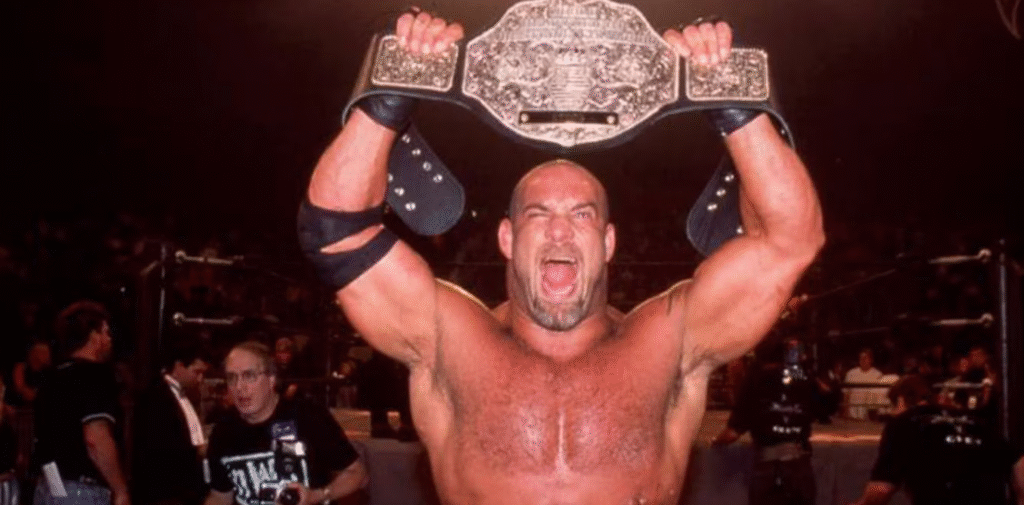
On September 22, 1997, Goldberg made his official televised debut on WCW Monday Nitro, squashing Hugh Morrus in a dominant, sub-two-minute match. From that moment, “The Streak” was born, and with it, one of the most successful and hilariously transparent marketing ploys in wrestling history. Week after week, Goldberg would destroy his opponents, and week after week, the on-screen graphic would tick up, chronicling his run of consecutive victories. The official, final number touted by WCW was an astonishing 173-0.
The number, of course, was pure fiction. It was a work of kayfabe arithmetic so blatant that it became part of the fun. Fans watched in amusement as the number would jump by absurd amounts from one week to the next. As one fan recalled, he might be 32-0 on one Nitro, and suddenly 56-0 by the following week, with WCW commentators attributing the leap to a series of untelevised house show victories that may or may not have actually occurred.
The “real” number is a subject of intense debate among wrestling historians, but all agree it was significantly lower than the official tally. The wrestling database ProFightDB lists only 99 victories for Goldberg before his first official loss. Other dedicated fan counts and researchers have landed on figures ranging from 120-0 to a more generous 150-0-5 (including draws). One of the most thorough analyses, which includes dark matches and house shows from his televised debut onward, puts the number closer to 168 wins.
| Source of Streak Number | The Claimed Streak | Notes & Caveats |
| WCW Official Broadcast | 173-0 | The official, on-air “kayfabe” number. Famously inflated weekly. |
| ProFightDB | 99-0 | Counts only televised and PPV matches from his official debut until Starrcade ’98. |
| Fan Research (Reddit Analysis) | 150-0-5 | Includes house shows and accounts for draws, but not the pre-debut loss. |
| Fan Research (DashingDan1) | 168-0 | Includes house shows and televised matches, starting from his TV debut. |
| The Full Picture (including dark matches) | 5-1 (pre-streak) | Goldberg lost his 6th overall match (a dark match) to Chad Fortune, making the entire “undefeated” narrative a work from the start. |
This discrepancy highlights a fascinating paradox at the heart of Goldberg’s appeal. His entire character was built on a foundation of authenticity—he was a “real” football player in a world of “fake” wrestlers. Yet, his signature accomplishment was a heavily manufactured lie. This contradiction, however, did not detract from his success; it fueled it. Fans, weary of cartoonish characters, were desperate for something that felt real. WCW used Goldberg’s legitimate athletic background to sell the superhuman streak. The “real” part (his gridiron history) made the “fake” part (the inflated number) feel plausible, creating a myth that was far more powerful and captivating than the simple truth.
Championship Glory and the Taser
As the streak grew, so did Goldberg’s popularity. The chants of “Gold-berg! Gold-berg!” became a deafening roar in arenas across the country. On April 20, 1998, he captured his first piece of gold, defeating Raven for the WCW United States Heavyweight Championship on Nitro. This set the stage for one of the most iconic moments in the history of the Monday Night Wars.
On July 6, 1998, WCW Monday Nitro emanated from the Georgia Dome in Atlanta. In front of a thunderous hometown crowd of over 39,000 fans, Goldberg challenged “Hollywood” Hulk Hogan for the WCW World Heavyweight Championship. In a moment that felt like a true passing of the torch, Goldberg hit Hogan with a Spear and a Jackhammer to win the title, sending the dome into a frenzy and marking a commercial peak for the company. He was now the undefeated, undisputed champion of the world.
For the next five months, he remained an unstoppable force. But all streaks must come to an end. At the Starrcade pay-per-view on December 27, 1998—Goldberg’s 32nd birthday—he defended his title against Kevin Nash. In a finish that remains one of the most debated and controversial booking decisions in wrestling history, Nash’s nWo stablemate Scott Hall, disguised as a security guard, slid into the ring and tasered Goldberg. A stunned Goldberg was then easily Jackknife Powerbombed by Nash, who pinned him to end the streak and his championship reign. The era of Goldberg’s invincibility was over, brought down not by a superior athlete, but by a cattle prod and backstage politics.
Part III: A Ruthless Aggression and a Notorious Exit
The First WWE Invasion
After WCW was purchased by its rival, World Wrestling Entertainment (WWE), in 2001, Goldberg sat out his lucrative Time Warner contract before finally making his WWE debut in 2003. He arrived on the March 31 episode of Monday Night Raw, the night after WrestleMania XIX, to a thunderous ovation. He confronted the night’s guest of honor, The Rock, famously telling him, “You’re next!” before breaking him in half with a devastating Spear.
His year-long run in WWE was defined by both on-screen dominance and off-screen tension. Backstage, he had a legitimate altercation with Chris Jericho. Resentment had simmered between the two since their WCW days. When Goldberg allegedly confronted Jericho and grabbed him by the throat, the smaller but more technically skilled Jericho surprised him by taking him to the floor and applying a front facelock, a hold Goldberg couldn’t break until other wrestlers intervened. The two men shook hands afterward, but the incident highlighted the culture clash between Goldberg, the explosive brawler, and the more traditionally trained WWE locker room.
Despite the backstage friction, his on-screen push was immense. He won the World Heavyweight Championship from Triple H at the Unforgiven pay-per-view on September 21, 2003. His reign lasted three months and included successful defenses against Triple H and Kane, before he lost the title back to Triple H in a Triple Threat match that also involved Kane at Armageddon in December 2003. His time in WWE was proving to be a condensed version of his WCW run: a quick rise, a dominant championship reign, and a controversial ending.
The WrestleMania XX Debacle
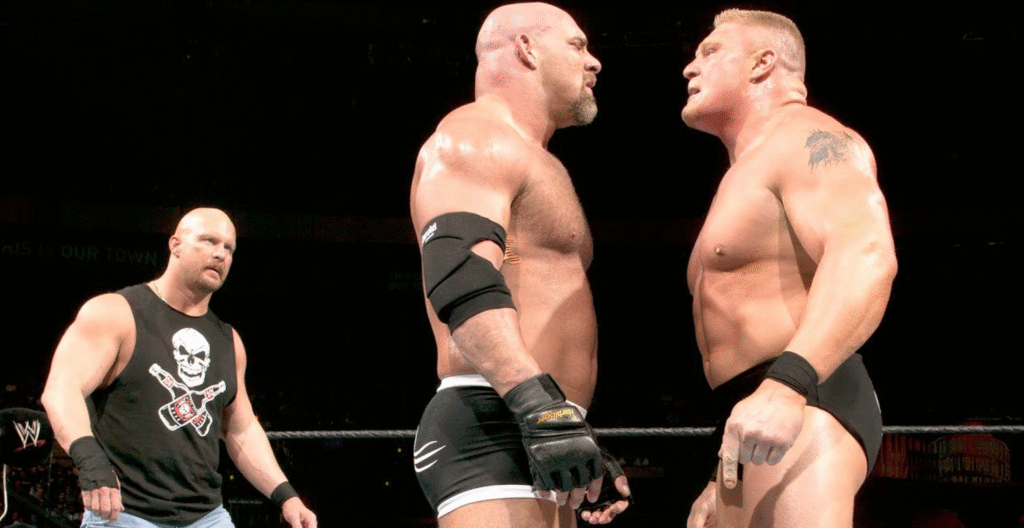
Goldberg’s first tenure with WWE culminated in what should have been a dream match: a clash of titans against the equally monstrous Brock Lesnar at WrestleMania XX in Madison Square Garden. Instead, it became one of the most infamous debacles in the event’s history. The match was doomed before the bell even rang due to a perfect storm of backstage drama and fan revolt.
In the weeks leading up to the show, news leaked that it would be the final WWE match for both men. Goldberg’s one-year contract was expiring and he had no intention of re-signing, while Lesnar was leaving to pursue a career in the NFL. The notoriously savvy New York City crowd felt betrayed. Why should they cheer for two men who were abandoning the company and the fans?.
As a result, from the moment their respective entrance themes hit, both men were showered with a relentless torrent of boos and hostile chants like “You sold out!” and “This match sucks”. The wrestlers, visibly shaken and unmotivated, responded with a sluggish, plodding match that consisted mostly of them staring each other down as the crowd’s jeers grew louder. Goldberg himself would later admit the fans’ reaction was justified, stating, “The fans turned on us, as well they should have, because why are they going to cheer for two guys who are out the door the next day?”.
Goldberg ultimately won the match after a Spear and a Jackhammer, but the result was irrelevant. The only person the crowd cheered for was the special guest referee, “Stone Cold” Steve Austin, who delivered his signature Stunner to both Lesnar and Goldberg after the match to send the fans home happy. The dream match had turned into a “disaster,” a “dumpster fire,” and a cautionary tale about what happens when the carefully constructed world of wrestling collides with the harsh realities of contracts and career ambitions.
Part IV: The Man Behind the Myth
Goldberg’s Garage
Away from the ring, Bill Goldberg is not just a performer; he’s a passionate and knowledgeable collector of one of America’s greatest art forms: the muscle car. His massive garage, often showcased on his YouTube channel Goldberg’s Garage, is a horsepower-heavy haven, with a particular focus on the rare and powerful Mopar machines of the late 1960s and early 1970s. His collection is a reflection of his on-screen persona: pure, unapologetic American power.
The collection is filled with crown jewels that would make any enthusiast weep. Perhaps the most historically significant is his 1970 Ford Mustang Super Boss 429 “Lawman.” This is not just any Mustang; it’s one of only a handful of cars created for a promotional tour between Ford and drag racer Al Eckstrand to support troops during the Vietnam War. It is the only one of the “Lawman” cars to be fitted with a Boss 429 engine, which was then supercharged to produce a staggering 1,200 horsepower.
Another highlight is a 1965 Shelby Cobra replica, but this is no ordinary kit car. It is one of only four replicas built by the brother of legendary NASCAR engine builder Ernie Elliot, and it houses a 900-horsepower NASCAR engine. The car is so terrifyingly powerful that Goldberg admitted he was afraid to drive it for several years after acquiring it. His garage also features a fleet of rare Mopars, including a 1968 Plymouth GTX convertible (one of only 12 made with a 426 Hemi engine and a four-speed manual transmission) and a 1970 Dodge Coronet R/T (one of just 18 “triple-black” models with the 440 Six-Pack engine). This passion reveals a side of Goldberg that is meticulous, historical, and deeply invested in the engineering and artistry of these iconic machines.
| Vehicle | Engine | Key Specs/Notes |
| 1970 Ford Mustang Super Boss 429 “Lawman” | Supercharged Boss 429 V8 | 1,200 hp; one of only a few Lawman cars ever built for a Ford/military promotional tour. |
| 1965 Shelby Cobra (Ernie Elliot Replica) | 900 hp NASCAR V8 | One of only four replicas built by the brother of NASCAR engine builder Ernie Elliot. |
| 2023 Dodge Challenger SRT Demon 170 Jailbreak | Supercharged 6.2L Hemi V8 | 1,025 hp; 1-of-1 “Green Machine” paint job applied specifically for Goldberg. |
| 1968 Plymouth GTX Convertible | 426 Hemi V8 | 425 hp; one of only 12 ever produced with a Hemi, convertible top, and four-speed manual. |
| 1970 Dodge Coronet R/T | 440 Six-Pack V8 | 390 hp; one of only 18 “triple-black” models with this engine configuration. |
| 1968 Dodge Dart Super Stock | 426 Hemi V8 | 425 hp (underrated); one of only 80 factory-built drag cars made in conjunction with Hurst Performance. |
From Santa’s Slay to The Goldbergs
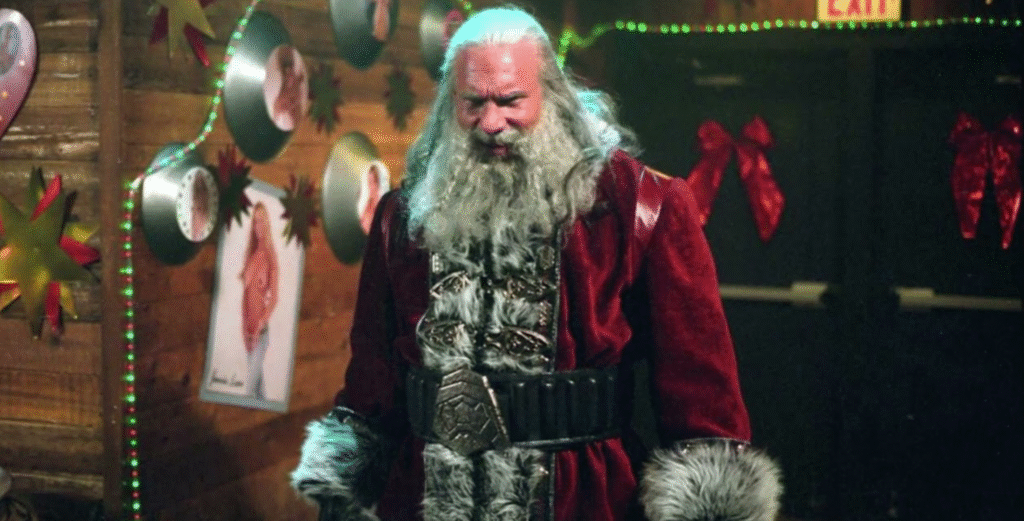
Like many wrestlers before him, Goldberg leveraged his in-ring fame into a surprisingly prolific acting career, appearing in a wide array of films and television shows. His filmography is an eclectic mix of action, comedy, and horror. He made his debut in the 1999 Jean-Claude Van Damme vehicle
Universal Soldier: The Return and had a cameo as himself in the wrestling comedy Ready to Rumble (2000).
His most notable film roles include playing the hulking inmate Joey ‘Battle’ Battaglio in the 2005 Adam Sandler comedy The Longest Yard, alongside a host of other wrestlers like Kevin Nash and ‘Stone Cold’ Steve Austin. That same year, he took on the lead role in the cult classic Christmas horror-comedy
Santa’s Slay, where he portrayed a demonic Santa Claus who, after losing a bet with an angel, is freed to go on a killing spree.
His television career has been even more varied. He has made guest appearances on network dramas like Law & Order: Special Victims Unit and NCIS: Los Angeles, and showed his comedic side with a recurring role as the hot-tempered P.E. teacher, Coach Nick, on the popular sitcom The Goldbergs. He has also found success as a television host, helming the reality competition shows
Bullrun and Forged in Fire: Knife or Death.
The Toughest Jew in the World?
In the world of professional wrestling, where performers often adopt larger-than-life personas with fabricated names and backstories, Bill Goldberg stood out for his authenticity. A significant part of that was his name. Born into a Reform Jewish family in Tulsa, he had a Bar Mitzvah and has always been proud of his heritage. When he entered WCW, he made the conscious decision to wrestle under his real, recognizably Jewish surname. This made him a unique figure in the industry and arguably the most famous and successful Jewish wrestler in history.
He embraced this status, even participating in a comedic segment on Comedy Central’s The Man Show where he celebrated Hanukkah in his own inimitable style. His position as a prominent Jewish world champion has become a point of discussion for a new generation. Current AEW World Champion Maxwell Jacob Friedman (MJF), who also prominently features his Jewish identity in his character, recently paid homage to Goldberg while also taking a playful shot at his infamous microphone skills, declaring himself “the first prolific world champion that just so happens to be Jewish… that is good at talking and wrestling”.
Champion for the Voiceless
Perhaps the most striking contradiction in the life of Bill Goldberg is the chasm between his on-screen character and his off-screen advocacy. In the ring, he was a destructive force, a man whose aggressive style had a reputation for being “stiff” and dangerous, most infamously leading to the accidental kick that ended Bret Hart’s career. Away from the ring, however, he has been a passionate and dedicated champion for animal welfare.
Goldberg served as a spokesperson for the American Society for the Prevention of Cruelty to Animals (ASPCA) and took his advocacy to the highest level of government. On July 27, 1999, at the height of his fame, he stood before the United States Congress to speak out against illegal animal fighting. He lent his considerable celebrity to push for legislation to ban cockfighting and the sale of dog and cat fur in the United States. During his speech, he expressed his personal embarrassment that his home state of Oklahoma was, at the time, one of only three states where cockfighting remained legal.
This image—the snarling, unstoppable monster of WCW, passionately pleading with lawmakers to protect abused animals—reveals the true complexity of the man. It showcases a deep-seated compassion that is the complete antithesis of his wrestling persona. This duality is central to understanding Bill Goldberg: a man who built a career on the illusion of pure, violent rage, while using his platform to fight for the truly voiceless.
Part V: The Second Coming
The 12-Year Itch
After the WrestleMania XX debacle, Goldberg walked away from wrestling for 12 years, seemingly content to focus on his family and acting career. Then, in 2016, the impossible happened. Driven by a marketing partnership for the
WWE 2K17 video game, where he was a featured legend, Goldberg made a shocking return to WWE. He appeared on the October 17 episode of
Raw to answer a challenge from his old rival, Brock Lesnar.
What followed was not the snarling, monosyllabic promo of his youth, but a raw, emotional address that was instantly hailed as the “promo of his life”. Visibly moved by the thunderous chants of his name, a nearly 50-year-old Goldberg spoke about his motivation for returning: he wanted his wife and, most importantly, his young son, who had never seen him wrestle live, to see him be a superhero one last time. The cynicism that had surrounded his first WWE run melted away, replaced by a genuinely heartwarming story of a father wanting to be a hero for his child.
The story reached its stunning climax at the Survivor Series pay-per-view on November 20, 2016. In a match that no one saw coming, Goldberg utterly destroyed the seemingly invincible Brock Lesnar, who had been booked as an unstoppable monster for years. Two Spears and a Jackhammer later, Goldberg had pinned Lesnar in a shocking 1 minute and 25 seconds. It was a monumental upset that perfectly recaptured the lightning-in-a-bottle magic of his WCW peak.
The Part-Time Champion Problem
Goldberg’s triumphant return soon became a source of major controversy. The very formula that made him a star in the 1990s—short, dominant, non-competitive squashes—clashed violently with the expectations of a modern wrestling audience, especially when a world championship was on the line.
His first Universal Championship reign began at Fastlane in March 2017, when he defeated the full-time champion Kevin Owens in a mere 22 seconds after a distraction. While he would go on to have a well-received match where he lost the title to Brock Lesnar at WrestleMania 33, the damage was done for many fans who felt a part-time legend had needlessly squashed a deserving full-time star.
The backlash was even more severe during his second Universal Championship reign in 2020. At the Super ShowDown event in Saudi Arabia, Goldberg defeated “The Fiend” Bray Wyatt, one of the company’s most protected and popular characters, to win the title. The fan response was overwhelmingly negative. Viewers were incensed that a 53-year-old part-timer had been booked to decisively end the run of a top star, seeing it as a short-sighted move that was detrimental to the future of the product. The reaction was so strong that celebrity fan Macaulay Culkin famously tweeted that he was canceling his WrestleMania tickets in protest. This highlighted a fundamental shift in wrestling fandom: the “Goldberg Experience,” once celebrated as a must-see spectacle, was now viewed by many as a “burial” of talent when a world title was involved.
The Final Gauntlet
After his final championship reign ended at WrestleMania 36, where he lost the Universal Title to Braun Strowman, Goldberg transitioned into the role of a special attraction legend. His final contract with WWE saw him appear for a series of high-profile, big-money matches, often at the company’s international stadium shows.
This final run was a mixed bag. It included a disastrous and dangerous match against The Undertaker in Saudi Arabia, a quick victory over Dolph Ziggler at SummerSlam, and championship challenges against WWE Champion Drew McIntyre and later Bobby Lashley. His last contractual match took place at the Elimination Chamber event in Saudi Arabia on February 19, 2022, where he unsuccessfully challenged Roman Reigns for the Universal Championship, passing out in Reigns’ guillotine choke. Since his contract expired, Goldberg has expressed a desire for a proper retirement match to officially close the book on his career, with a final showdown against Gunther for the World Heavyweight Championship teased for an event on July 12, 2025.
Conclusion: The Legacy of the Spear
Bill Goldberg’s legacy in professional wrestling is as complex and polarizing as the man himself. He is a five-time world champion, a WWE Hall of Famer, and one of the biggest box-office draws of his era. He holds the unique distinction of being the only wrestler to have won the WCW World Heavyweight Championship, the WWE World Heavyweight Championship, and the WWE Universal Championship. In an even more bizarre piece of trivia, he is the only person to win a world title
after being inducted into the WWE Hall of Fame.
His career is a powerful testament to the idea that in wrestling, presentation can be just as important, if not more so, than in-ring prowess. He was never a technical master, and his list of five-star matches is short. But through sheer intensity, a believable backstory, an iconic entrance, and a devastating finisher, he became a lightning-in-a-bottle phenomenon. He was the right man, with the right look, in the right place, at the right time.
Simultaneously, he is a figure of controversy. Critics point to his reputation as a stiff and sometimes unsafe worker, the accidental kick that ended Bret Hart’s career, and the divisive nature of his modern championship reigns as stains on his record. But his impact is undeniable. For a brief, shining moment, he was the hottest act in a business that was at its absolute peak, a real-life superhero who made millions of fans believe. His final legacy is best encapsulated by his signature move, the Spear: it was rarely elegant, often brutally direct, but when it hit, you never forgot it.
| Championship | Reign # | Date Won | Event/Show | Opponent Defeated | Date Lost | Opponent Lost To |
| WCW World Heavyweight Championship | 1 | July 6, 1998 | WCW Monday Nitro | Hollywood Hulk Hogan | December 27, 1998 | Kevin Nash |
| WCW United States Heavyweight Championship | 1 | April 20, 1998 | WCW Monday Nitro | Raven | July 27, 1998 | Vacated |
| WCW United States Heavyweight Championship | 2 | October 25, 1999 | WCW Monday Nitro | Bret Hart | November 8, 1999 | Bret Hart |
| WCW World Tag Team Championship | 1 | December 7, 1999 | WCW Thunder | Creative Control (with Bret Hart) | December 13, 1999 | The Outsiders |
| WWE World Heavyweight Championship | 1 | September 21, 2003 | Unforgiven | Triple H | December 14, 2003 | Triple H |
| WWE Universal Championship | 1 | March 5, 2017 | Fastlane | Kevin Owens | April 2, 2017 | Brock Lesnar |
| WWE Universal Championship | 2 | February 27, 2020 | Super ShowDown | “The Fiend” Bray Wyatt | March 25, 2020 | Braun Strowman |


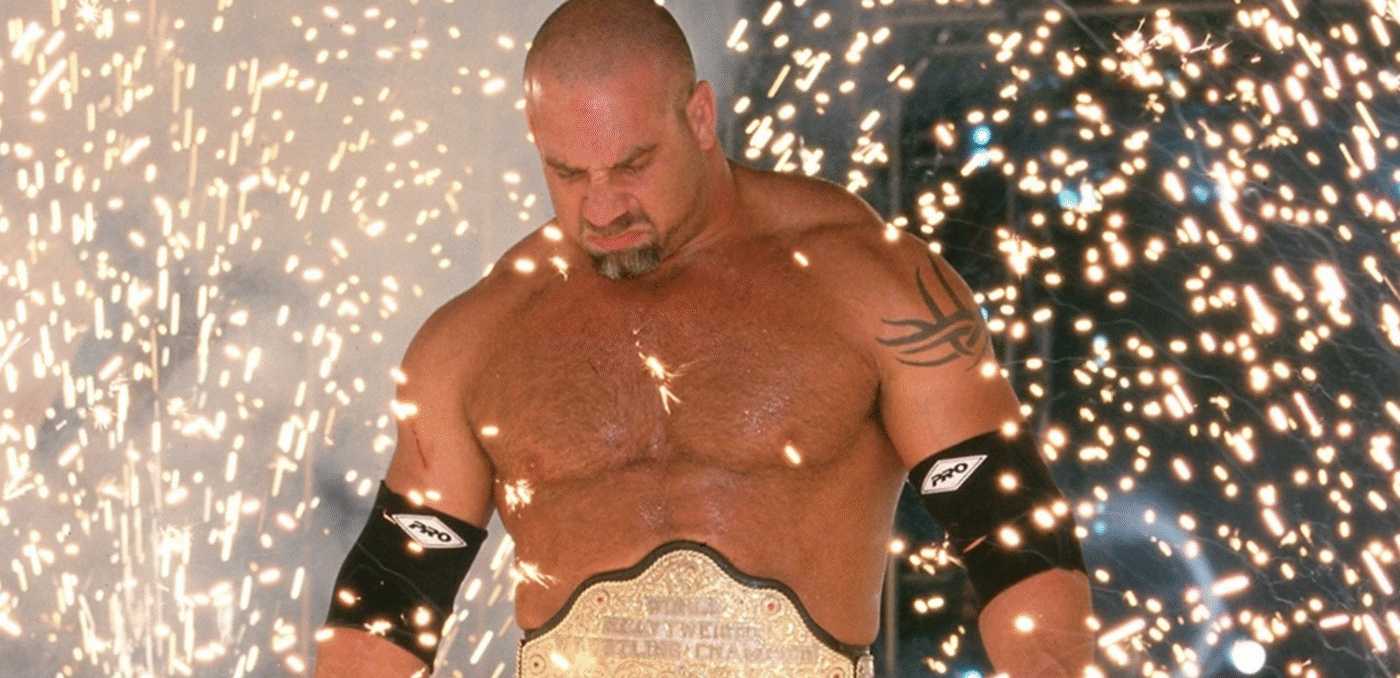


Leave a Comment